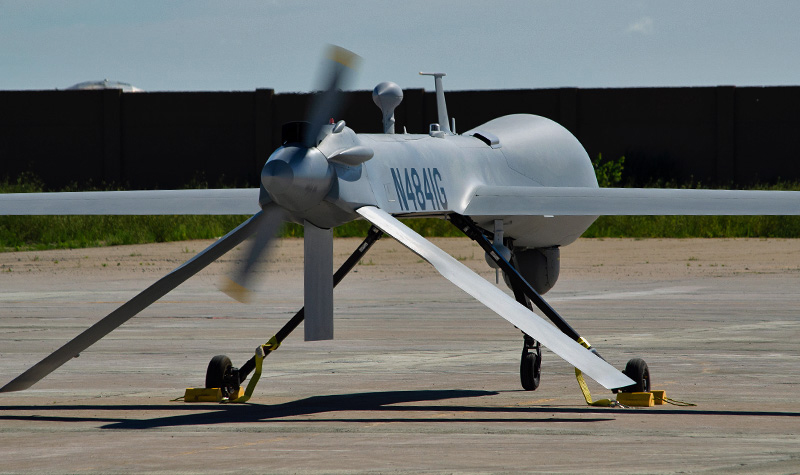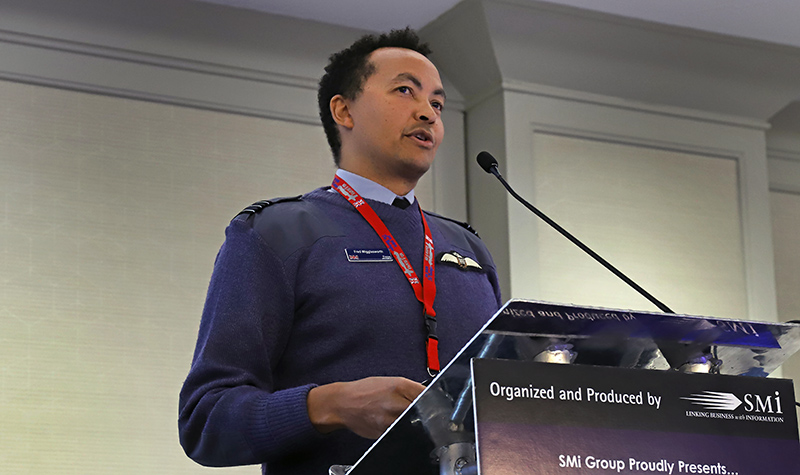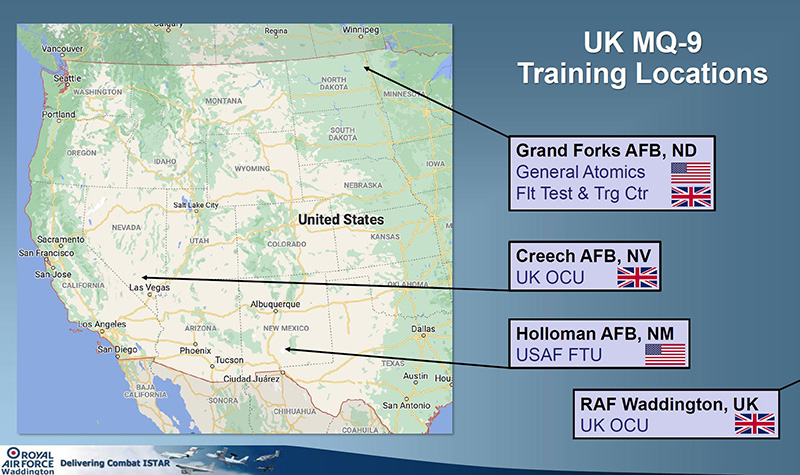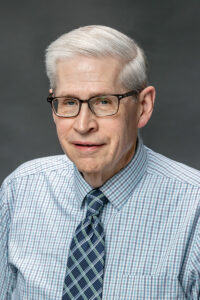UND showcases UAS expertise to military leaders
UND president chairs — and UND is only university with a presence at — conference in Arlington, Va., on military UAS tech and training

The UAV Technology USA Conference earlier this month in Arlington, Va., gave the University of North Dakota an inside look at the plans and challenges the United States military and some of its allies are facing in the realm of unmanned aircraft systems (UAS).
Speakers at the two-day conference covered subjects ranging from emerging national security threats to training the next generation of unmanned aerial vehicle (UAV) pilots to the technological advances needed to keep the U.S. and its allies ahead of their adversaries. UND President Andrew Armacost chaired the event, which was also attended by a University delegation.
“This conference provided a good overview of each military service and several partner nation’s efforts to integrate, update and extend their use of unmanned systems and remotely piloted aircraft,” said Robert Kraus, dean of UND’s John D. Odegard School of Aerospace Sciences, who retired as a colonel following a 28-year career in the U.S. Air Force.
“Many are based on current systems, so the discussions were well-informed, and the contacts made here will support their fielding and sharing of lessons learned,” he said.

All branches of the U.S. military services were present, as were the British, Australian and Canadian Royal Air Forces. Other speakers included defense contractors from conference sponsors General Atomics Aeronautical Systems Inc., Echodyne Corp. and Fortem Technologies, as well as the Defense Advanced Research Projects Agency (DARPA).
“The conference demonstrated the tremendous opportunity for UND and the state of North Dakota to impact the future of autonomous systems for defense and commercial applications,” said John Mihelich, Vice President for Research & Economic Development. “It also reinforced the investments, strategy and trajectory we have set at UND and across the state.”
Next generation training
Wing Commander Frederick Wigglesworth with the RAF 39 Squadron gave a presentation on training and developing the next generation of UAS pilots, some of which will take place at the General Atomics Flight Training and Testing Center west of Grand Forks. He used his time to pitch the need for more diversity in the male-dominated ranks of the military UAS world.

“I’d love to see companies not only sponsor this conference, but also young, bright students,” he said. “Have them up front asking all the awkward questions. They’re the ones who are going to actually shape the future of this technology.”
In discussing the training of “Generation Z” recruits for UAS crews, Wigglesworth noted that this generation has more knowledge and greater expectations than past generations.
“Do they see this as a job for life or is it just a job?” he asked. “They live in a world where information is readily accessible and instantly available. They expect to have it all the time. They are really smart and they need different approaches. It takes advanced instruction to actually recognize what type of learning and what type teaching works.”
Armacost served more than 30 years in the Air Force before retiring as a brigadier general and then becoming the University’s 13th president in 2020. He told the audience of 120 invited participants, “I have a personal connection, through my own research on planning and control of autonomous systems and through the work I’ve helped support at both the U.S. Air Force Academy and now at UND.”
North Dakota’s UAS ecosystem
UND was the only university with a presence at the conference. Armacost opened the event by providing an overview of its role in the world of UAS research and development, training and education, and its initiatives in space and national security.

Noting that the School of Aerospace Sciences has been in existence for more than 40 years, has an internationally renowned aviation program and a reputation for training world-class pilots, Armacost emphasized that it has been a leader in UAS technology development and education since 2005. The UAS program now has the aerospace school’s second highest number of majors.
Armacost listed a number of UAS firsts UND and the state of North Dakota have achieved. These include offering the first degree in UAS operations in 2009; having the first Federal Aviation Administration-approved UAS test site; being the first UAS program accredited by the Aviation Accreditation Board International; and becoming the first university to join the U.S. Space Force University Partnership Program.
“All of these efforts have led to a unique UAS ecosystem in the state of North Dakota, which is centered in Grand Forks where UND’s campus is located,” Armacost told attendees.
Citing strong local, state and federal support, as well as being located near the Grand Forks Air Force Base and the Cavalier Space Force Station, he said, “The good news is that our UAS ecosystem is getting better all the time as our partnerships with government and industry continue to grow.”
Armacost also noted that UND is home to the Research Institute for Autonomous Systems (RIAS). He emphasized that as a comprehensive research university, it can bring other disciplines into its work on autonomous systems, such as business, law, policy and medicine. In addition, he said UND’s strong distance education capabilities mean that it can provide education and training to service members wherever they’re located.
“Just as our community of Grand Forks is named for its location at the confluence of the Red and Red Lake rivers, I see our University as being strategically located at the confluence of UAS development, space defense technology, national security and workforce development,” Armacost said.

Key conference takeaways
Amy Whitney, director of UND’s Center for Innovation, identified two key takeaways from the UAV Technology USA conference.
“One was gaining a stronger understanding of the immediate problem sets facing the military with UAV technology as it helps us strategically identify startups and other autonomous technology companies to come to North Dakota and partner with our local installations to address the challenges,” she said.
“A second takeaway was seeing the innovation and commercialization potential for the Department of Defense that align with UND’s strengths in areas such as energy, aerospace and engineering,” Whitney added.
In his closing comments, Armacost said the conference provided a forum for ideas, an opportunity to learn about the work of others and a sense of direction on where to head together and how to connect.
“What really struck me was the sense of partnership that can exist within this community – across nations, across branches of the service, across industries and industry partners, and also with universities,” he concluded.
Other UND attendees of the conference included Brian Tande, Dean of the College of Engineering & Mines; Ryan Adams, Director of the School of Electrical Engineering & Computer Science; Paul Snyder, UAS Program Director; and Mark Askelson, Executive Director of the Research Institute for Autonomous Systems.
The conference was organized by the London-based SMi Group, a global company specializing in business-to-business conferences, workshops and masterclasses. It is part of the SAE Media Group, which delivers events for the defense, security, energy, utilities, finance and pharmaceutical sectors.



